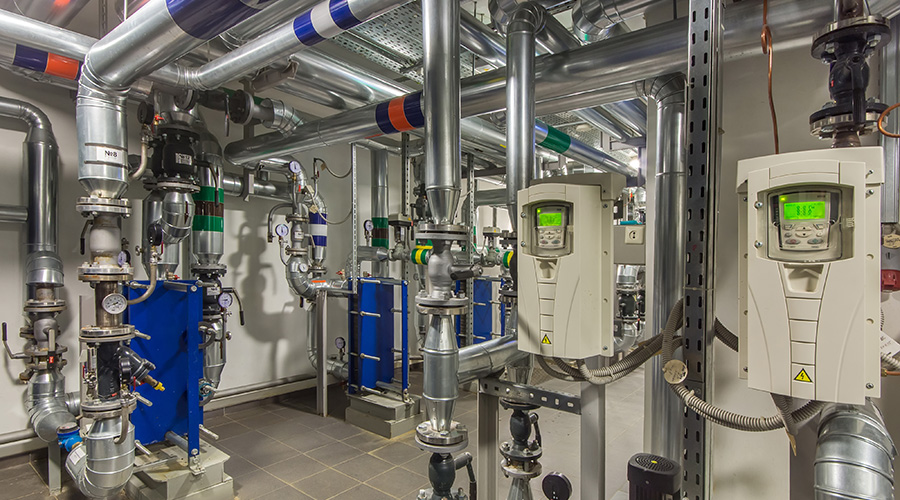 CoreVisual
CoreVisual Maximizing Chiller Performance
A great preventive maintenance program uses innovation to partner technology while remaining focused on eliminating chiller downtime
By Travis Short, P.E., and Brian Seago
As economic uncertainty continues, maintenance and engineering managers need to further pinpoint their focus on the never-ending battle of doing more with less. The delicate balance of budget scrutiny and efficient mechanical performance necessitates unconventional approaches to uncomplicated concepts.
Simply stated, how does one maintain a high-performance professional race car on the budget constraints of a family minivan?
Aligning performance and cost
Traditional team dynamics often cause friction during critical decision-making processes; managers first need to address the issue to ensure positive and proactive team cohesion. The struggle of managers who work within the confines of financial directives from executive leaders must be replaced with a new paradigm focused on innovation.
Elevating innovation to the core of a team’s focus allows all the players to better scrutinize their individual contributions toward the overall goal, thus achieving the best possible mechanical performance within the proper budgetary strategy.
Historically, the operations strategy of preventive maintenance (PM) has been to mitigate risk and maximize the useful life of equipment. From the boardroom to the mechanical room, this focus has driven teams to tailor their financial assets toward limiting downtime as a result of failures and maximizing operational performance across an extended timeframe.
Everyone who works in the facility maintenance and engineering industry knows it’s not if a chiller will fail but rather when a chiller will fail. Ensuring these inevitable failures are not catastrophic is crucial.
An effective PM program identifies key performance trends and addresses potential issues before they occur. A great PM program goes one step further and uses innovation to partner technology and new industry processes while remaining laser focused on eliminating downtime and maximizing performance.
One example of this approach is to use seasonal tube brushing and a non-corrosive chemical such as a biodegradable descaler. If properly applied, these two strategies will safely clean the tubes and maximize heat transfer in the condenser, allowing the chiller to work more efficiently while lowering daily operational cost.
It is important to never lose sight of overall performance and efficiency when approaching any preventive maintenance program. Keeping a chiller running and minimizing downtime are important goals, but overall efficiency and performance are even more important.
In today’s facilities environment, being able to maximize efficiency and performance have a quantifiable return on investment that can be actualized in real time and shown to executive leadership when making provisions for annual preventative maintenance budget discussions. Using innovation when presenting these realized returns allows other team members to better understand the reasons the PM program is important and the way it can not only prolong a chiller’s life, but also save money on an operational basis.
Harnessing the power of data
One cornerstone of being properly prepared for discussions with executive leadership is to provide real data from the chiller. It is imperative to have technicians perform a daily log of the chiller and record all the relevant data points in relation to its operation. These logs can be used to predict issues before they occur, and they can be used to generate important trends and performance data.
Properly trending performance data is critical for managers seeking to prove the overall efficiency of a PM program and verify its cost-benefit analysis during the budget development process. It is important to have performance data on the chiller, but it is critical to have environment data to tell the entire story.
Understanding the way the chiller is operating in a variety of environmental conditions also tells a broader story on the way building automation systems (BAS) can further enhance the overall operation of a chiller plant.
The final step of using innovation in maximizing chiller and plant performance can be found in BAS programming. While BAS programming and optimization can have huge impacts on overall plant and chiller performance, the returns on BAS programming will not be realized if the individual chillers are not fully operationally optimized.
A great BAS technician can solve a wide variety of problems, but they will never be able to make a mechanically inefficient chiller operate at a high level of performance. A properly designed and executed PM program will not only extend the useful life of a chiller but also will allow a great BAS technician to design a program to boost overall plant and individual performance of all the chillers they program, further adding value in overall plant performance and effectively saving operational cost.
Testing performance
The final piece of the puzzle centers on testing the chiller and the overall support components. With respect to overall chiller performance and the avoidance of common challenges such as low delta T syndrome — a mismatch between supply water temperatures and return water temperatures — the main culprit must be identified by assessing the water flow through the chiller. If a technician analyzes this issue, it is often a simple flow and temperature differential in the hydronic heat transfer.
One common challenge in hydronic systems is the over- or under-pumping of chillers. The incorrect flow through chillers contributes to overall improper system operation and a waste of energy.
To better understand the impact of flow on performance, which parlays into the requirements for periodic testing of the chiller, operations teams need to analyze hydronic heat transfer and the way it relates to the evaporator flow requirement and low delta T. They also should obtain readings at the chiller to ensure proper hydronic balance and performance and confirm that improper chiller flow is not the root cause. This might require the expertise of a commissioning agent who intimately understands hydronic heat transfer.
Facility managers who are concerned about chiller performance flow and various maintenance issues should implement control and optimization strategies in conjunction with maintenance and testing. This approach can have a dramatic impact on overall chiller and plant performance. When analyzing chiller operation, implementing proper PM activities and ensuring correct flow will have a lasting impact on the overall system.
Travis Short, P.E., and Brian Seago are facility maintenance experts at Henderson Building Solutions, a national design-build construction management and commissioning firm.
Related Topics:












